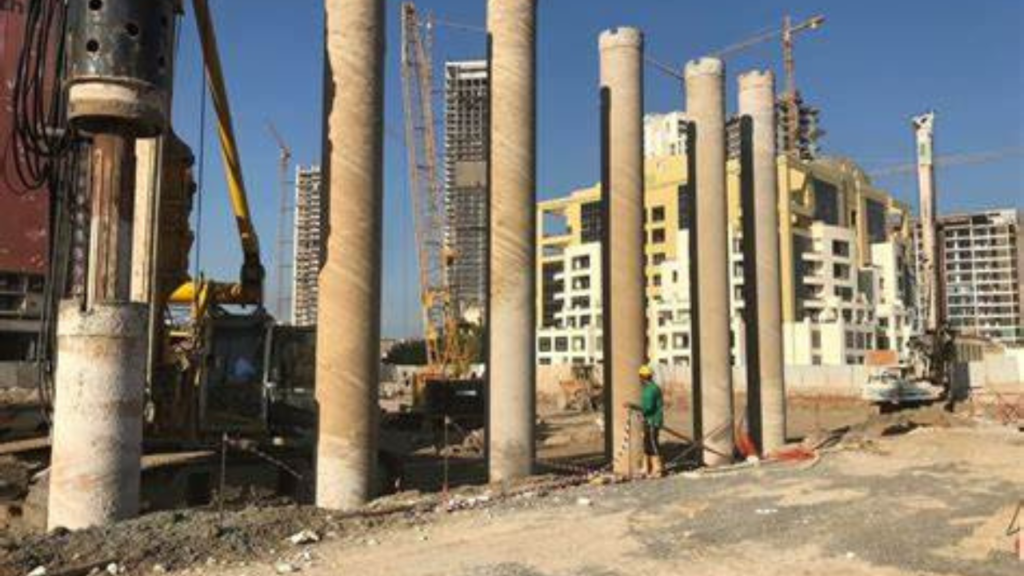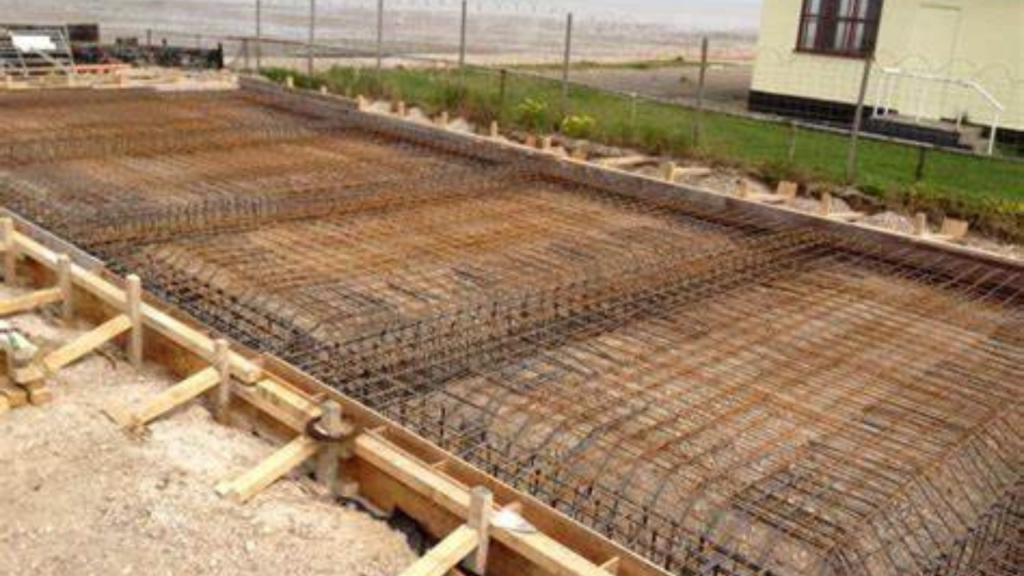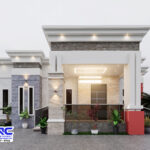High-rise buildings also known as skyscrapers or multi-storey towers are marvels of modern engineering.
In cities like Lagos, Abuja, and Port Harcourt, these structures are becoming more common due to rapid urbanization and limited land space.
However, their massive height and weight require a solid, reliable base a foundation that can carry heavy loads, resist movement, and ensure long-term stability.
So, which type of foundation is most suitable for a high-rise building in Nigeria (and elsewhere)? Let’s break it down in simple terms.
Table of Contents
ToggleSee also – Which foundation is suitable for which soil?
What Makes High-Rise Buildings Different?
Before we dive into foundation types, it’s important to understand why high-rise buildings need special attention:
- They carry enormous weight from many floors and occupants.
- They are affected by wind loads, seismic movements, and vibration.
- They are often built on limited land in urban areas.
- They require a foundation that will not settle or shift over time.
For these reasons, shallow foundations (like strip or pad foundations) are not suitable.
Instead, engineers rely on deep foundations especially pile foundations and raft foundations, sometimes used together.
Best Foundation Types for High-Rise Buildings

1. Pile Foundation (Most Suitable)
What It Is:
Pile foundation involves long, strong columns (piles) that are driven or drilled deep into the ground until they reach a strong layer of soil or rock.
These piles then transfer the building load deep below the surface.
Why It’s Ideal for High-Rises:
- Reaches stable ground or bedrock to carry massive loads
- Minimizes the risk of uneven settlement
- Works well in weak, swampy, or waterlogged soils
- Supports very tall structures and heavy vertical loads
Types of Piles Used:
- Bored (drilled) piles – used where vibration must be minimized (e.g., in city centers)
- Driven piles – precast concrete, steel, or Franki piles
Where is it used in Nigeria:
- Frequently used in Lagos Island, Lekki, Ikoyi, Abuja, and Port Harcourt for commercial towers, hotels, and residential high-rises.
See related – All about piling foundation in Nigeria – What to expect
2. Raft Foundation (Sometimes Used in Combination)

What It Is:
A raft (or mat) foundation is a large concrete slab that spreads the load of the building across the entire footprint of the structure.
It is sometimes combined with piles (called piled raft foundation) for extra strength.
Why It’s Useful:
- Distributes load evenly, reducing the chance of settlement
- Good for moderately strong soils
- Useful when there’s not enough space for individual pile caps
Limitation:
- On its own, it may not be strong enough for very tall buildings on weak soil unless combined with piles.
See related – What is raft foundation | advantages and disadvantages
Factors That Determine the Right Foundation
- Soil Type: A detailed geotechnical investigation is done to determine soil bearing capacity and depth of strong strata.
- Building Height and Load: The taller and heavier the building, the deeper and stronger the foundation needed.
- Water Table: High water tables (common in coastal cities like Lagos) require special pile designs.
- Space Constraints: In tight urban spaces, engineers may prefer bored piles to reduce vibration.
- Cost and Time: Deep foundations are expensive and time-consuming but necessary for safety.
See also – Strip foundation explained to common man
Which Is the Most Suitable?
Pile foundation is the most suitable foundation type for high-rise buildings in Nigeria, especially when:
- The soil is soft, clayey, or waterlogged
- The building is 10 storeys or more
- There is a need for strong vertical and lateral load support
In some cases, a piled raft foundation (raft + piles) is used to combine the advantages of both systems.
Conclusion
For any high-rise project, the foundation is not an area to cut corners.
While pile foundations are more expensive and technically demanding, they offer the strength, durability, and stability required to safely support tall buildings especially in Nigeria’s challenging soil conditions.
If you’re planning a high-rise, always start with a comprehensive soil test and consult with qualified structural and geotechnical engineers.
A well-designed foundation is the key to a safe, lasting structure that can stand the test of time.
See related – Pad foundations explained | pros and cons
Frequently asked questions
What are the most commonly used foundation types for high-rise buildings?
High-rise buildings typically require deep foundations due to their immense weight and height.
The most commonly used foundation types include pile foundations, caisson foundations, and mat (raft) foundations.
These foundations provide stability and distribute the load efficiently to prevent structural failure.
Why are deep foundations preferred for tall structures?
Deep foundations extend far below the surface to reach strong soil layers or bedrock, ensuring stability and reducing the risk of settlement.
Tall buildings exert significant pressure on the ground, and deep foundations help distribute this weight evenly to prevent tilting or sinking over time.
How do pile foundations support high-rise buildings?
Pile foundations consist of long columns driven deep into the ground to transfer the building’s weight to stronger soil layers or bedrock.
They provide excellent load-bearing capacity and stability, making them suitable for skyscrapers built on weak or compressible soil.
What is a mat foundation, and when is it used for skyscrapers?
A mat foundation (also known as a raft foundation) is a large, continuous concrete slab that supports the entire structure by evenly distributing the building’s weight over a wide area.
It is used for high-rise buildings in locations with moderately strong soil where deep foundations may not be necessary.
Are caisson foundations suitable for high-rise buildings?
Yes, caisson foundations are used for extremely tall or heavy buildings where load distribution is critical.
Caissons are deep, watertight chambers filled with concrete and reinforced materials, providing a strong base for high-rise structures built near water bodies or on unstable ground.







